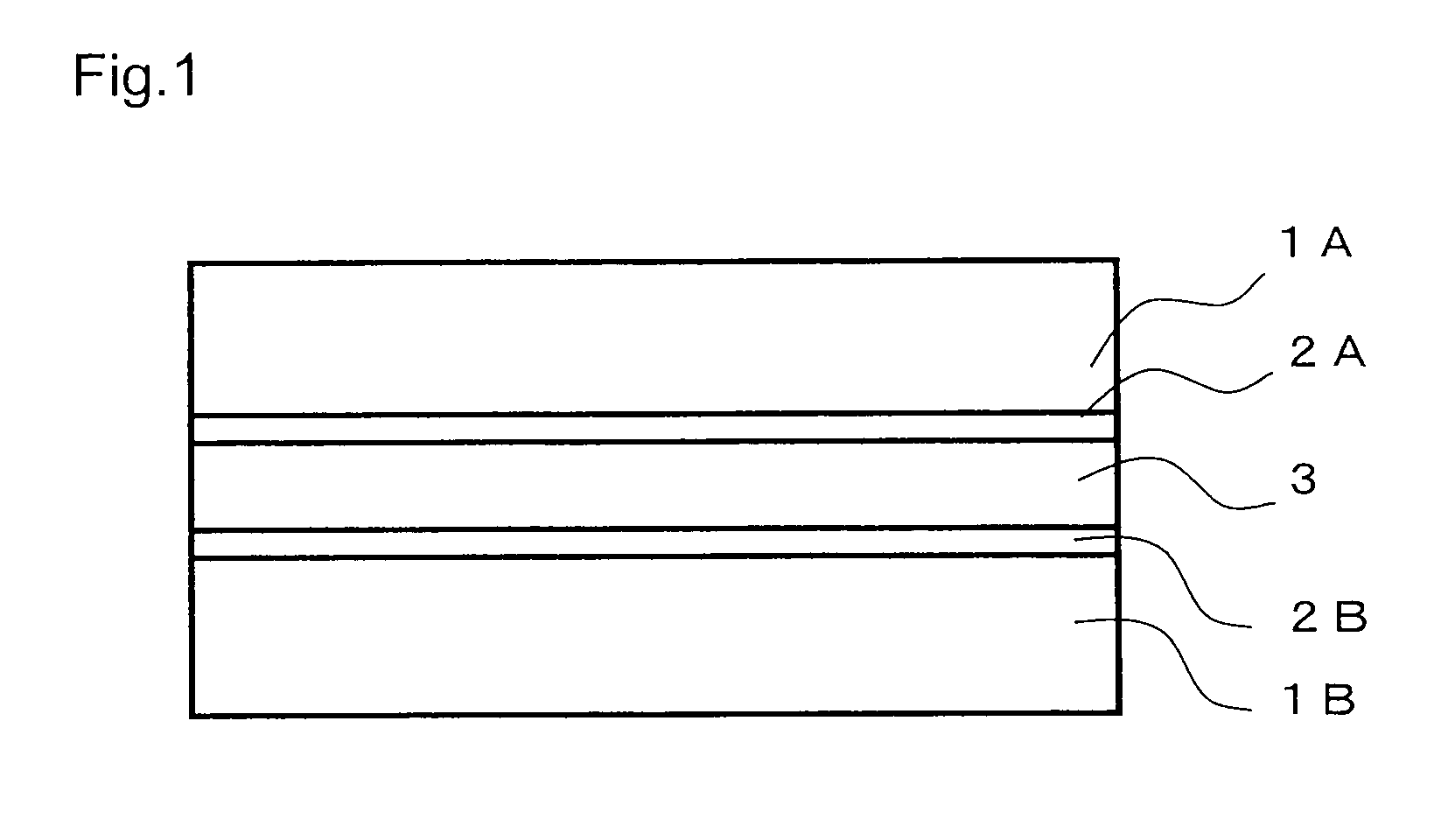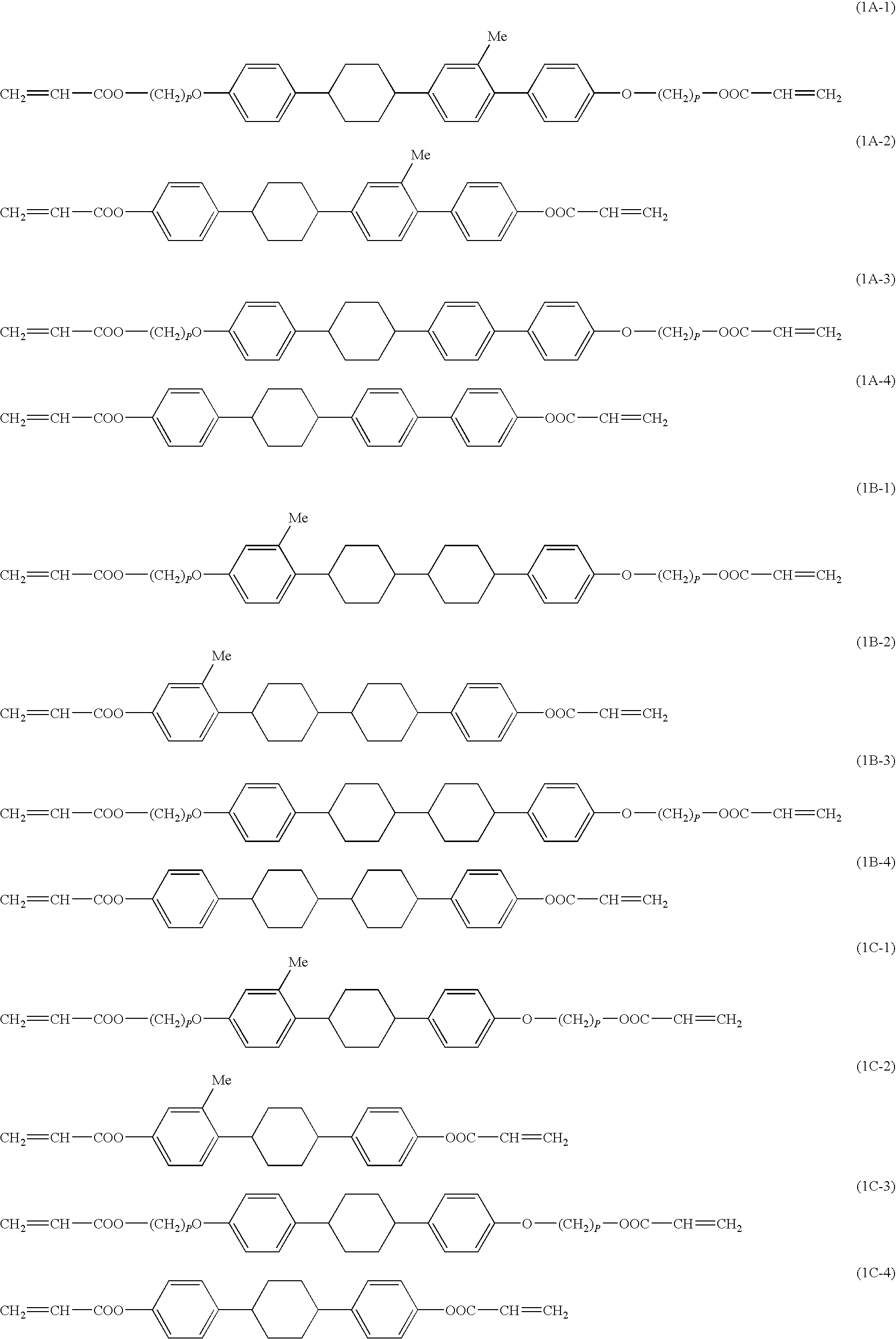Bifunctional polymerizable compound, liquid crystal composition, optical anisotropic material and optical element
a technology of optical anisotropic material and compound, which is applied in the direction of thin material processing, instruments, chemistry apparatus and processes, etc., can solve the problems of affecting the light utilization efficiency of optical elements, the alignment state may be disturbed, and the twisted alignment structure of liquid crystal molecules is less stable, so as to prevent the loss of transmittance, not to impair light resistance, and to suppress the broadening of the rectangle of selected reflection.
- Summary
- Abstract
- Description
- Claims
- Application Information
AI Technical Summary
Benefits of technology
Problems solved by technology
Method used
Image
Examples
example 1
[0102]A compound (1A-1a) which is the compound (1A-1) wherein p=6 was prepared as follows in accordance with the above preparation method 1.
1) Preparation of Compound (13)
[0103]First, a compound (13) was prepared from a compound (11) in accordance with the following reaction formula:
[0104]Into a 500 mL four-necked flask equipped with a reflux condenser, a stirrer and a dropping apparatus, magnesium (5.08 g, 0.212 mol) and iodine (0.1 g) were added, and then 2 to 3 drops of a solution comprising the compound (11) (43.2 g, 0.212 mol) in dehydrated tetrahydrofuran (THF) (300 mL) were dropwise added in a nitrogen stream, followed by heating with a dryer. After the reaction started and color by iodine changed to colorless, the rest of the solution was dropwise added over a period of 30 minutes. The dropwise addition was slowly carried out so that the reaction temperature would not increase. After completion of the dropwise addition, stirring was carried out at room temperature for 3 hour...
example 2
[0121]A compound (1A-1b) which is a compound (1A-1) wherein p=4 was prepared as follows in accordance with the above preparation method 1.
[0122]First, a compound (18) was prepared in the same manner as in Example 1.
[0123]Then, a compound (1A-1b) was prepared from the compound (18) in accordance with the following reaction formula:
[0124]Into a 500 mL four-necked flask equipped with a reflux condenser, a stirrer and a dropping apparatus, the compound (18) (1.5 g, 0.0039 mol), 4-hydroxybutyl acrylate (1.40 g, 0.0097 mol) and triphenylphosphine (2.54 g, 0.0097 mol) were added, and they were dissolved in THF (25 mL). While nitrogen was introduced to the obtained solution, 4.0 g of diethyl azodicarboxylate (40% toluene solution) was slowly dropwise added under cooling in an ice bath, and the solution was reacted overnight. After completion of the reaction, water and ethyl acetate were added for liquid separation, and the organic layer was recovered. The recovered organic layer was washed ...
example 3
[0128]A compound (1A-3b) which is a compound (1A-3) wherein p=4 was prepared as follows in accordance with the above preparation method 1. That is, the following compound (19) was obtained in the same manner as in Example 1 except that 1-bromo-4-chlorobenzene was used instead of the compound (11). Then, a compound (1A-3b) was obtained from the compound (19) in the same manner as in Example 2.
[0129]The 1HNMR spectrum of the compound (1A-3b) is shown below.
[0130]1HNMR (400 MHz, solvent: CDCl3, internal standard: TMS) δ (ppm): 1.54 to 1.89(m,16H), 2.71(m,2H), 3.97(t,4H), 4.18(t,4H), 5.82 to 6.45(m,6H), 6.67(dd,2H), 6.86(dd,2H), 7.00 to 7.20(m,4H), 7.30 to 7.38(m,4H).
[0131]The melting point of the compound (1A-3b) was 350° C. or above, and the phase transition to the liquid crystal phase could not be confirmed.
PUM
| Property | Measurement | Unit |
|---|---|---|
| composition | aaaaa | aaaaa |
| optical anisotropic | aaaaa | aaaaa |
| thermotropic | aaaaa | aaaaa |
Abstract
Description
Claims
Application Information
 Login to View More
Login to View More - R&D
- Intellectual Property
- Life Sciences
- Materials
- Tech Scout
- Unparalleled Data Quality
- Higher Quality Content
- 60% Fewer Hallucinations
Browse by: Latest US Patents, China's latest patents, Technical Efficacy Thesaurus, Application Domain, Technology Topic, Popular Technical Reports.
© 2025 PatSnap. All rights reserved.Legal|Privacy policy|Modern Slavery Act Transparency Statement|Sitemap|About US| Contact US: help@patsnap.com



